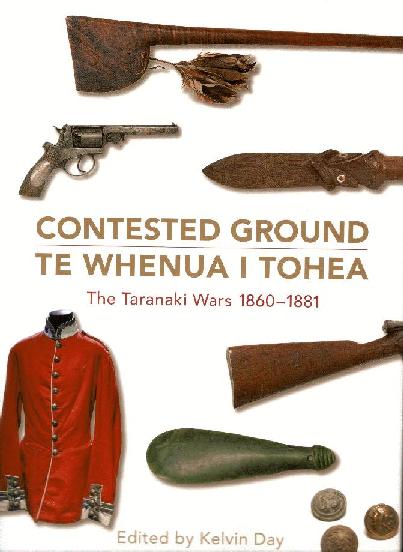Contested Ground
Contested Ground Te Whenua I Tohea: The Taranaki Wars 1860-1881
Day, Kelvin Ed. 2010 Contested Ground Te Whenua I Tohea: The Taranaki Wars 1860-1881. Huia Publishers Wellington. ISBN 9781869697111
The Blurb
"The first shots were fired on Wiremu Kingi's Te Kohia pa on 17 March 1860, marking the start of twenty-one years of direct conflict between Maori and Pakeha in the Taranaki region interspersed with periods of uneasy peace, culminating in the invasion of the Parihaka settlement on 5 November 1881. In Contested Ground: Te Whenua i Tohea, Kelvin Day brings together eleven distinguished academics and historians who provide fresh and engaging insights into this turbulent period, much sourced from previously overlooked material, and a remarkable collection of photographs and illustrations. 2010 marks the 150th anniversary of the start of the Taranaki Wars, and this thoughtful and informative volume helps shed new light on the people and political landscape of 19th century Taranaki and the legacy of the wars on the history of Aotearoa New Zealand."
Mini Review
This is a POP page.
|
Kelvin Day has edited a book that will be for long a standard source on the Taranaki wars. Its immediate joy are the illustrations, a wonderful collection, many little known. Of course the depicters are from one side of the war so they can overall seem a little one sided, but the text balances that. There are 12 chapters and an introduction, involving 12 authors. The context is set well in the early chapters, Richard Taylor provides an intriguing chapter on the strategy of both sides. Clearly the Maori side had little in the way of tactical reserves, or of supplies to call on, and was constrained seasonally to when they could sustain an offensive. These were often a telling differences. Nigel Prickett provides a chapter on the fortifications of both sides and contrasts their different purposes and relationship to the stages of the wars. That will be of greatest interest to archaeologists as he draws heavily on the archaeology. Tim Ryan looks at the soldiers and warriors and the organisation and social aspects of the British army. Inevitably the disparity of resources left this part a bit one sided.
The effects of the war on Nelson where many settlers were evacuated and some Maori tension resulted is an area little covered elsewhere and shows the regional spillover effects in a different light from those often presented. The later stages of the impact in the formation of the armed constabulary and the political and military power play over Parihaka are well covered.
There is relatively little citation of Maori sources – perhaps they are rare. Peter Adds discusses the aftermath as it affected Maori – a section that could have done with some tighter editing to weed out some inconsistencies and certainly could have done with some supporting sources. It reads as true enough but perhaps can be best accepted as advocacy, if a bit in contrast to the rest of the book.
